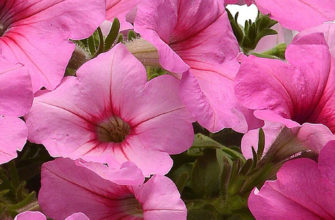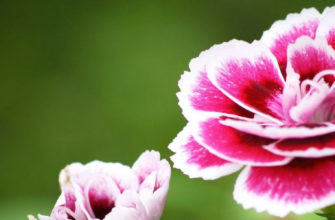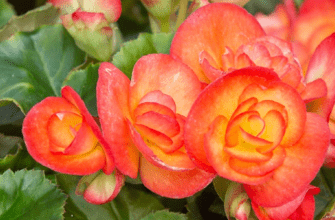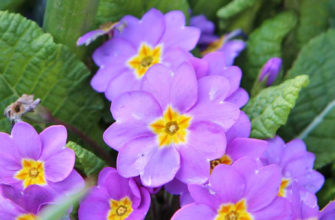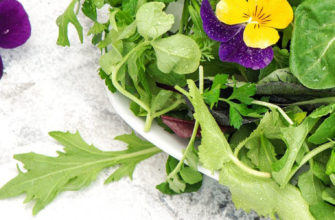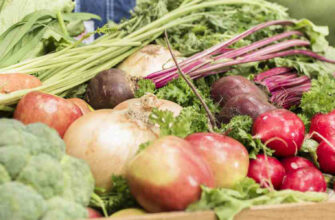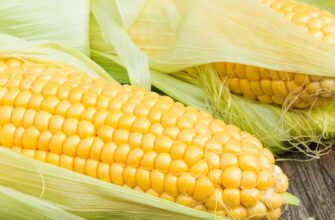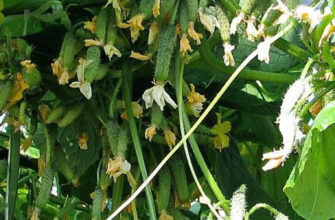Carnations (Dianthus, family Caryophyllaceae) are fragrant, fringed-petal flowers ideal for carnation gardening, flower beds, carnation container gardening, and cut arrangements. This dianthus planting guide covers how to grow carnations from seeds, including indoor sowing and direct seeding, as well as vegetative propagation, carnation care, pest and disease management, culinary uses, and their symbolic meanings.
Whether you’re a beginner or seasoned gardener, these carnation growing tips will help you cultivate vibrant carnation varieties.
- Methods of Growing Carnations from Seeds
- Sowing Carnation Seeds for Seedlings
- Transplanting Carnation Seedlings
- Direct Seeding in Open Ground
- Growing Carnations in Pots
- Vegetative Propagation of Carnations
- Propagation by Cuttings
- Propagation by Layering
- Propagation by Division
- Carnation Care
- Carnation Diseases
- Carnation Pests
- Culinary Uses of Carnations
- Health Benefits of Carnations
- Interesting Facts and Symbolism
- Conclusion: Bring Carnations to Your Garden
Methods of Growing Carnations from Seeds
Sowing Carnation Seeds for Seedlings
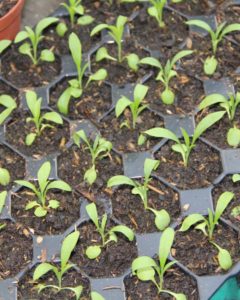
To achieve blooming in the first year, start carnation seed germination indoors 8 weeks before the last expected spring frost. This method is key to successful carnation cultivation.
- Process: Sow seeds in trays or containers filled with light peat, sprinkling them on the surface and lightly covering with soil. Cover the tray with plastic wrap to retain moisture and place in a room with temperatures of +15…+20°C. Water gently using a spray bottle to avoid displacing tiny seeds. Remove the wrap periodically for ventilation to prevent mold.
- Germination: Seedlings emerge in 2–3 weeks. Once sprouted, ensure ample sunlight by placing trays on a sunny windowsill or using fluorescent grow lights (16 hours on, 8 hours off) to support carnation seed germination. Avoid incandescent bulbs, as they overheat. Raise lights as plants grow taller.
- Fertilization: Seedlings require minimal carnation fertilization. Apply a balanced liquid fertilizer for indoor flowers (e.g., NPK 10-10-10) 3–4 weeks after germination at half strength.
- Hardening Off: Before transplanting, harden seedlings for dianthus planting by placing them in a sheltered outdoor spot (protected from wind and direct sun) for a week. Bring them indoors at night if frost is expected. This strengthens plants and reduces transplant stress.
Transplanting Carnation Seedlings
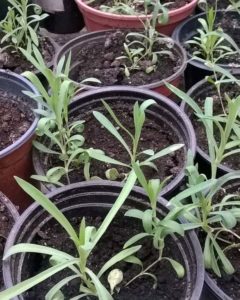
For carnation cultivation in open ground, seedlings should have 2–3 true leaves. Prepare the bed by digging soil to a depth of 15–30 cm, removing debris and weeds. Incorporate organic matter like compost or well-rotted manure to meet carnation soil requirements (pH 6.0–7.0) and enhance soil fertility.
- Timing: Transplant after the last frost risk, typically in late spring (e.g., May in Ukraine). Choose a sunny location with loose, well-drained soil. Transplant in the evening or on a cloudy day to minimize stress.
- How to Transplant:
- Dig holes large enough to accommodate the root ball. Space plants 25–30 cm apart, depending on the carnation varieties (e.g., closer for D. chinensis, wider for D. caryophyllus).
- Gently loosen the root ball by hand to stimulate root growth.
- Plant at soil level without burying the stem.
- Firm the soil around the roots and water thoroughly.
- Apply a light layer of organic mulch (hay, sawdust, bark) as part of carnation mulching tips to retain moisture and suppress weeds.
Direct Seeding in Open Ground
Direct seeding is another method for how to grow carnations from seeds, ideal for biennials like Turkish carnation (D. barbatus). Sow in mid-summer for blooming the following year.
- Process: Choose a sunny site with loose, well-drained soil. Clear weeds and debris, dig to 15–20 cm, and add organic fertilizers. Sow seeds at a depth of 5–6 mm. Maintain consistent soil moisture without overwatering to support carnation seed germination.
- Germination: Seeds sprout in 2–3 weeks, depending on soil and weather conditions. Keep weeds under control by hand-pulling or mulching. Organic mulch (bark, leaf litter) enhances soil health and prevents weed growth, aligning with organic carnation growing practices.
- Watering: Water weekly to keep soil moist about 3 cm below the surface. Check moisture by inserting a finger into the soil. Water early in the morning to allow foliage to dry, meeting carnation watering needs (approximately 25–30 mm of water weekly).
Growing Carnations in Pots
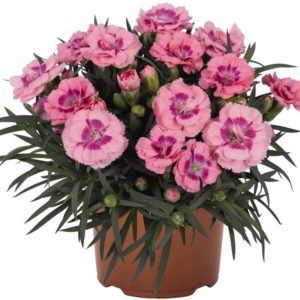
For carnation container gardening, sow seeds in trays with light peat at a depth of 5–6 mm. Water with a spray bottle and cover with glass or plastic wrap to maintain humidity. Place in a bright location (avoid direct sunlight) at +20°C or lower.
- Germination: Seeds sprout in 14–21 days. Ventilate trays regularly and water as needed. Remove the cover once seedlings appear.
- Transplanting: When plants develop 1–2 true leaves, transplant into pots at least 20 cm in diameter. Place pots on a sunny windowsill or open balcony for optimal carnation care.
- Care: Water regularly and fertilize every 1–2 weeks with a balanced liquid fertilizer to support grow carnations in pots.
Vegetative Propagation of Carnations
In addition to seeds, how to propagate dianthus includes vegetative methods like cuttings, layering, and division, ideal for preserving carnation varieties.
Propagation by Cuttings
Cuttings ensure varietal purity in carnation cultivation. Take 10–12 cm shoots, remove lower leaves, and plant 1–2 cm deep in light soil (peat mixed with sand, perlite, or compost). Sterilize soil with a potassium permanganate solution to prevent disease.
- Process: Water cuttings and place in partial shade. Roots form in about three weeks, indicated by new growth at the tips. Gradually acclimate to full sun and fertilize with a balanced flower fertilizer (carnation fertilization).
- Tip: Cuttings are best taken in summer for species like D. caryophyllus.
Propagation by Layering
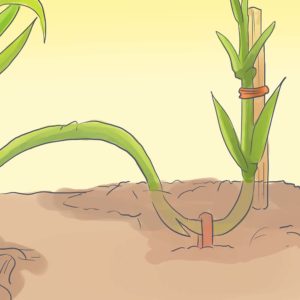
Layering is suitable for garden carnations (D. caryophyllus) and is best done in July.
- Process:
- Select a strong, non-flowering side shoot.
- Remove lower leaves, leaving 4–5 pairs at the top.
- Gently bend the stem without breaking it, make a small cut below the last leaf pair, and bend the cut section.
- Bury the stem in soil and secure with a wire or clip.
- Roots form in 1.5 months, after which the plant can be separated and transplanted.
- Tip: Layering supports carnation cultivation for robust plants.
Propagation by Division
Division is ideal for Turkish carnations (D. barbatus) due to their fibrous, shallow roots. Perform in early spring before sap flow for same-year blooming.
- Process:
- Dig up the plant and shake off soil.
- Divide the bush into 2–3 parts with a sharp knife, ensuring each has at least one leaf rosette.
- Trim dry stems and roots with pruners.
- Plant divisions in soil and water regularly.
- Tip: Division is a quick way to propagate established carnation varieties.
Carnation Care
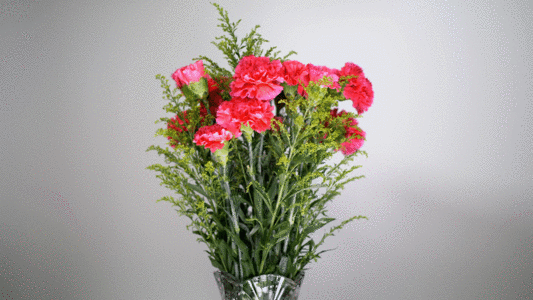
Carnations are low-maintenance, requiring timely watering, fertilization, and weed control for successful carnation care.
- Watering: Avoid overwatering to prevent root rot (carnation disease prevention). Water frequently with small amounts, loosening soil around plants to improve drainage. Weekly watering (25–30 mm) meets carnation watering needs.
- Fertilization: Apply at least two feedings: one week after transplanting and at the start of blooming. Use a balanced fertilizer (e.g., NPK 20-20-20) at 0.5 tbsp per plant for initial growth, then switch to low-nitrogen, high-potassium fertilizers during budding (carnation fertilization). Organic options include well-rotted manure or compost for organic carnation growing.
- Pruning: Removing spent flowers (carnation pruning tips) encourages repeat blooming in some varieties (e.g., D. caryophyllus). It’s optional but enhances flower production.
- Winter Care: Cover plants with plastic or agrofiber in snowless winters. Dedicated gardeners can transplant carnations into pots for indoor overwintering, applying a final fertilizer dose in early September.
Carnation Diseases
Carnations, especially in carnation greenhouse growing, are susceptible to diseases, particularly in humid conditions. Prevention is key, with chemical fungicides recommended for outdoor plants and safer alternatives for indoor ones (carnation disease prevention).
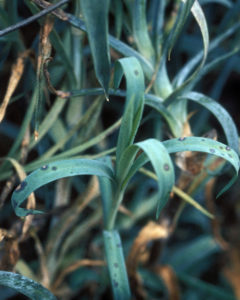
Alternaria (Black Leaf Spot): Small reddish-brown spots with gray-white centers form on leaves and stems, causing wilting in warm, humid conditions. Prevention: Avoid wetting foliage, remove infected parts, ensure good air circulation. Treatment: Use fungicides like Bordeaux mixture, copper oxychloride, Skor, or Ridomil Gold.
Gray Mold: Gray mold appears on flowers, leaves, and stems in cool, wet conditions. Prevention: Avoid dense planting and excessive phosphorus/potassium fertilizers. Remove affected parts and water in the morning. Treatment: Apply Rovral Aquaflo, Fundazol, Topsin M, or Topaz.
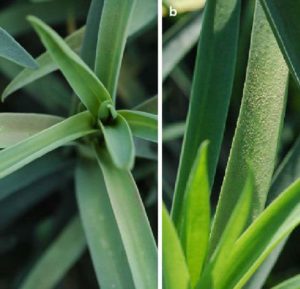
Downy Mildew: White-gray patches form on leaf undersides, causing curling and premature drop. Prevention: Practice carnation crop rotation, avoid overhead watering, ensure air circulation. Treatment: Use a milk-iodine solution (1 L milk, 9 L water, 10–12 drops iodine) weekly or fungicides like Fitosporin, Bordeaux mixture, Kurzat, Strobi, or Revus.
Powdery Mildew: White or gray coating on leaves in high humidity, leading to curling. Prevention: Ensure ventilation through proper spacing and carnation pruning tips. Treatment: Spray with a soda-soap solution (0.3–0.5% baking soda, 30–40 g soap per 10 L water) or copper-soap mix (25 g copper sulfate, 200 g soap per 10 L water). Chemical options include Fundazol, Tilt, or Topsin M.
Carnation Pests
In carnation gardening, pests like aphids, spider mites, and thrips can damage plants or spread diseases (carnation pest control).
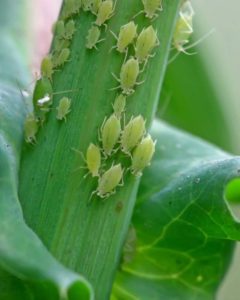
Aphids: Sucking insects (green, red, black, peach-colored) leave sticky residue and spread diseases.
Control: Attract natural predators like ladybugs and hoverflies by planting fennel, dill, or carrots. Lavender repels aphids. Wash off with a strong water jet or use insecticides like Bitoxibacillin or Aktara.
Spider Mites: Tiny arachnids (red, black, brown, yellow) suck plant sap, causing yellowing and spotted leaves.
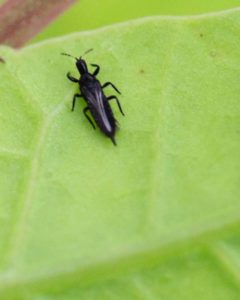
Control: Inspect plants regularly, remove affected leaves, and wash with water every other day or use a soap solution for indoor plants. Apply Aktofit or Aktellik if needed.
Thrips: Small black or straw-colored insects damage petals and leaves, causing spotting.
Control: Remove plant debris in fall to prevent overwintering. Use aluminum foil between rows to deter thrips. Wash with water or treat with Fitoverm, Vertimec, Aktara, Aktellik, or Confidor.
Culinary Uses of Carnations

Petals of garden (D. caryophyllus) and Chinese (D. chinensis) carnations are edible, offering a slightly sweet, aromatic flavor for culinary use. Remove the bitter base of petals before use.
- Applications: Add vibrant petals to casseroles, salads, or sandwiches. Use as a spice in mulled wine or candy petals for cakes and desserts. In the Renaissance (15th–17th centuries), carnation petals were a key ingredient in Chartreuse liqueur, produced by Carthusian monks in Voiron, France.
- Tip: Use fresh or properly processed petals to avoid bitterness in carnation varieties used for food.
What other flowers can be eaten, read the article:
Health Benefits of Carnations

Carnations offer potential health benefits, though some claims lack scientific backing. They are said to calm the nervous system, reduce muscle spasms, and support heart health. Their diaphoretic properties may aid in treating dry skin, rashes, or eczema. Carnations are used in cosmetics (creams, lotions, perfumes) and massage oils for their soothing effects.
Precautions: Carnations may stimulate the uterus, so pregnant or breastfeeding women should avoid them. Consult a doctor before use, especially if taking medications.
Uses:
- Essential Oil: Available in pharmacies or online for aromatherapy.
- Carnation Tea: Brew 1 tsp of dried petals and stems in a cup of boiling water for 5 minutes.
Benefits: May alleviate inflammation, endometriosis, skin irritation, nausea, flu symptoms, anxiety, PMS, diarrhea, or skin sagging.
Interesting Facts and Symbolism
Carnations have a rich history dating back to ancient Greek and Roman times, used in art and decor. In Christian tradition, they are linked to the Virgin Mary’s tears. In the United States, carnations symbolize Mother’s Day, inspired by Anna Jarvis gifting her mother the flower. Their blooms last long after cutting, making them ideal for arrangements.
- Symbolism: Carnations represent feminine love and charm, with meanings varying by color:
- Pink: Maternal love
- Light red: Admiration
- Dark red: Deep love and affection
- White: Pure love and luck
- Striped: Regret or refusal
- Purple: Capriciousness
- Yellow: Disappointment or disdain
Conclusion: Bring Carnations to Your Garden
Carnations (Dianthus) are a timeless addition to any garden, offering vibrant blooms, delightful fragrance, and versatile uses in carnation gardening. Whether you’re sowing seeds for carnation seed germination, propagating through cuttings, or adding their edible petals to culinary creations, these flowers make how to grow carnations a rewarding journey. With proper carnation care—from well-drained soil to timely carnation fertilization and carnation pest control—you can enjoy their beauty from spring to frost. Their rich symbolism, from maternal love to deep affection, adds emotional depth to every bloom.
Start your carnation cultivation today, whether in a sunny garden bed, a balcony pot, or a greenhouse. Experiment with carnation varieties like the elegant D. caryophyllus or the hardy D. deltoides, and let these charming flowers bring color and joy to your space. Share a pink carnation with a loved one or grow a patch of dianthus companion plants for a stunning display. With this dianthus planting guide, your garden will flourish with the timeless allure of carnations.
If you have found a spelling error, please, notify us by selecting that text and pressing Ctrl+Enter.

